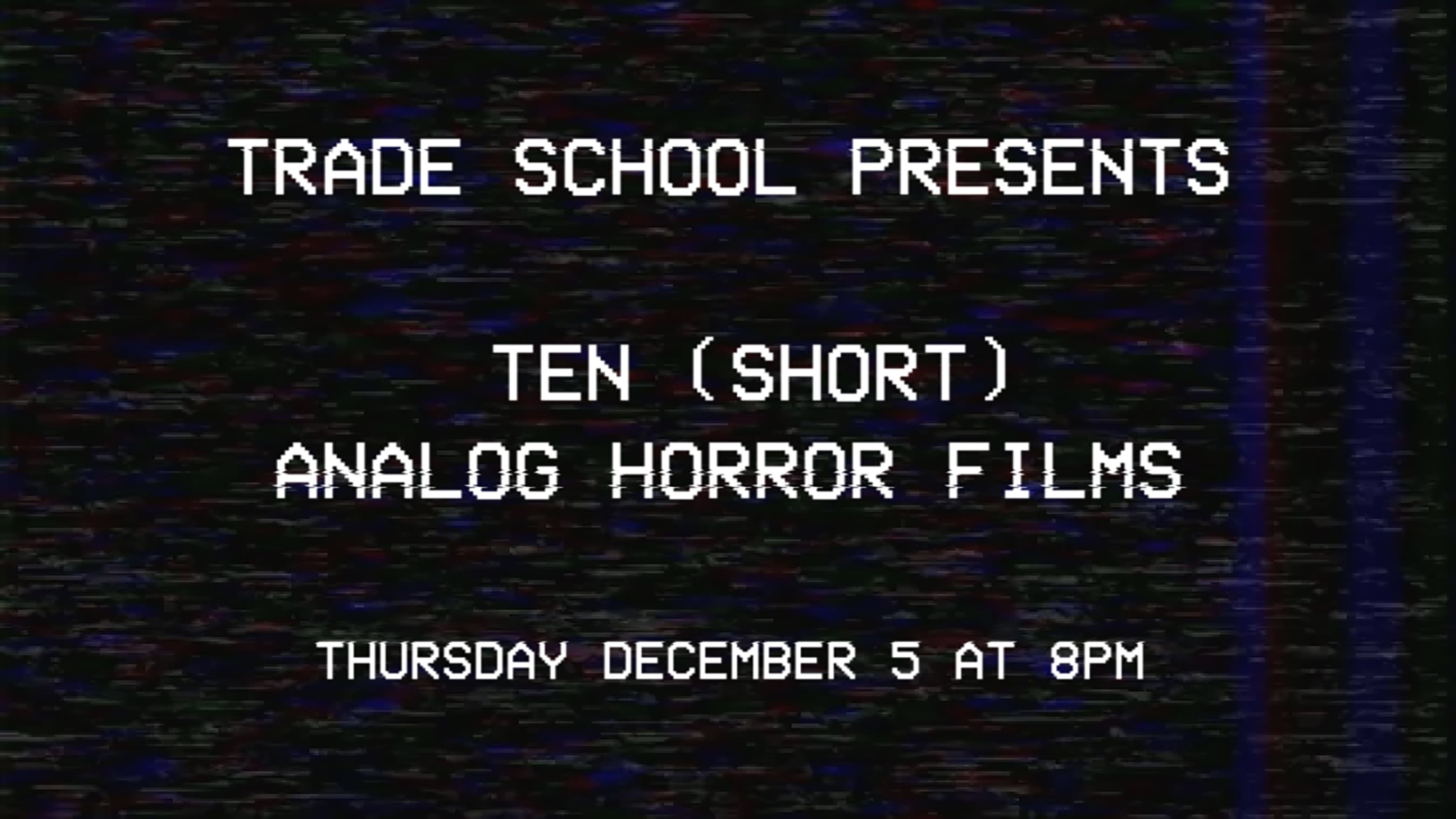
Doors 730PM
Screening 800PM
Program
curated by aesaesaes
Since time immemorial, teenagers have applied themselves enthusiastically to excavating all manner of garbage from the cultural sediment and inventing entire artistic genres. In the case of analog horror, these excavations have presented opportunities for technical experimentation and hallucinatory historical revisionism. How is it possible that a kid born in 2003 remembers the Eighties better than I do? Those of us born in the twentieth century may hazily recall how grim its final decades were, how obviously the world was careening towards disaster on the coattails of aphorisms like “government is the problem” used as cover for the most governmental shit ever, how demoralizing it was to experience the big boxification of our neighborhoods through the prism of having nowhere to go without being both surveilled and disregarded, how impossible it seemed that our lives would extend not just into a new century but a new millennium with nothing to show for it but an encyclopedic knowledge of pop culture and a lingering fear of two-digit dates. Analog horror reflects all of this dread, reinventing the dying gasps of the last century as an endless playback of sinister infomercials, station IDs, program listings, security tapes, nature documentaries, declassified archives, and public service announcements. Even weirder is that the subgenre, typically traced to found footage horror like The Blair Witch Project (1999), really broke open when YouTubers started using Blender and After Effects to recreate the same look of the home videos we shot in 1995 when we were trying to be the next Quentin Tarantino. Pedants of Reddit(1) notwithstanding, analog horror has transcended its thrifted-VHS roots to encompass frivolous jump scares, “entities” scribbled in Procreate, and conventions inherited from video game walkthroughs. Sometimes the results are scary, sometimes they’re silly, and most of the time they’re both. We should take this combo very seriously, because it serves as a warning. The kids whose basic life functions are being watched and warped on social media are coming for every message ever broadcast, and they’re out for blood.
(1) "Analog Horror, at it's true core, is just Horror storytelling done through the means of Analog Media. Be it Physical Photos, Camcorder / Tape recorded footage, and Analog Audio. It's not VHS filters, it's not Scary Faces or Distorted creatures, it's not taking a childhood cartoon character and making them scream at the camera." (@TurtleBox_Official)
Arden Stern is a scholar of U.S. visual culture and design history whose current research analyzes the labor history of graphic design in the United States and material histories of digital media. They currently teach in the department of Humanities and Sciences at ArtCenter College of Design, where they are a proud member of the ArtCenter Faculty Federation (AFT Local 5648). Arden has been the recipient of research fellowships from the Walter P. Reuther Library, Winterthur Library, and American Antiquarian Society, as well as of ArtCenter's Samsung-endowed Faculty Enrichment Grant and the Hoffmitz Milken Center for Typography Educator Grant. Arden has contributed to various publications, including Design and Culture, Design Issues, and Print, and are currently preparing a book manuscript that analyzes race and labor hierarchies in United States graphic design history.